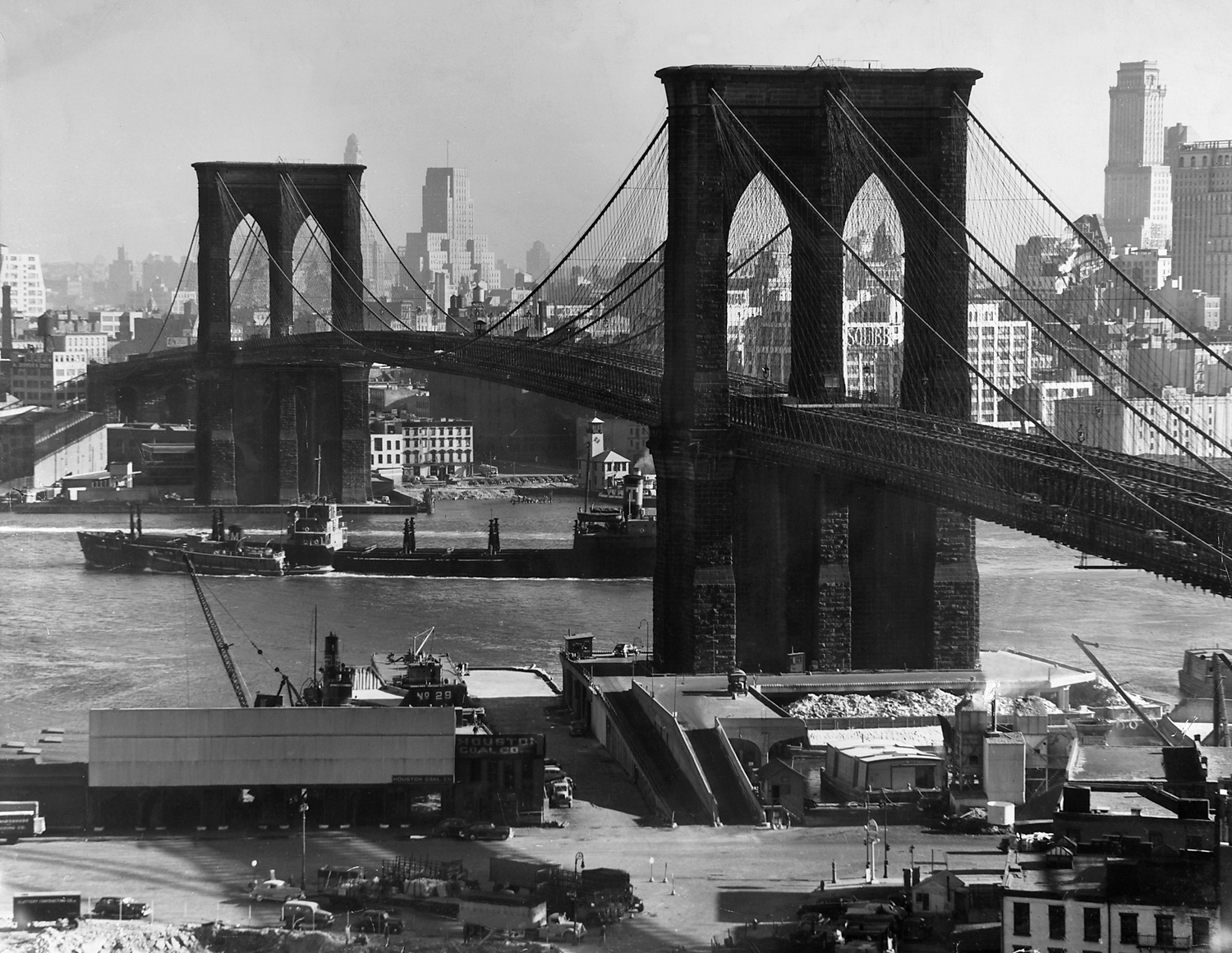
A bridge is an idea before it is a thing, and if the idea is coherent enough, and strong enough, the structure that grows from the idea will last. Bridges, after all, are hardly mere methods of conveyance: the best of them celebrate the human need to connect — with other people, other places — and it is this celebratory, optimistic quality that lends the greatest bridges their enduring appeal.
The gorgeous Golden Gate. The dreamlike Ponte dei Sospiri. London’s Tower Bridge. The countless covered, timber-built gems across the U.S. and Canada. The Millau Viaduct in southern France. The George Washington arcing over the Hudson (which Le Corbusier once praised as “the most beautiful bridge in the world … blessed … the only seat of grace in the disordered city”). The world is filled with beautiful bridges — big and small, famous and largely unknown — and each one started as an idea before ending up as something meaningful. Maybe this one was the site of a marriage proposal, or that one marked the deeply satisfying end of a once-in-lifetime road trip. The reasons why people love certain bridges are as varied as the styles, sizes and construction materials of the edifices themselves.
And then there’s the Brooklyn Bridge.
Ever since it opened 130 years ago today, on May 24, 1883, the limestone, granite and steel neo-Gothic marvel connecting “the borough of churches” and Lower Manhattan has managed to humble and inspire those lucky enough to see it in real life, and especially those lucky enough to stroll across its at-once soaring and human-scaled walkway. The bridge’s astonishing interplay between the ancient (the Gothic arches paired in each of the two towers) and the contemporary (the protean Manhattan skyline, the commercial bustle of New York Harbor and the river below) imparts a rare and thrilling vibe to the whole: it’s possible to imagine that the structure has been there, anchoring the two sides of the river, not for a century but for millennia.
[More: See the LIFE gallery, “Lower Manhattan: Where New York Was Born.”]
More remarkably, the scale of the Brooklyn Bridge has somehow managed to remain ideal amid its ever-changing surroundings. When it was first built, its towers — rising 270 feet above the water — were the tallest manmade structures in North America, and the bridge’s colossal size spoke to America’s near-lunatic energy and its Manifest Destiny-driven push to new lands, new challenges, new resources, new everything. Today, surrounded by architecture and technology that was literally inconceivable when it first opened, the Brooklyn Bridge still looks and feels like a structure that was built with eternity in mind.
New York has grown enormously larger, while the borough of Brooklyn itself, if it was a city unto itself, would be the fourth largest in the United States. But the Brooklyn Bridge does not feel smaller, or less significant in the face of the transformed environment that surrounds it. In fact, in some respects, the bridge feels more monumental than it ever has.
[MORE: See the LIFE gallery, “Love Letter to New York: Classic LIFE Photos of the Big Apple.”]
Ultimately, the bridge’s enduring power as an engineering wonder and as a breathtaking work of art both derive from its designer’s singular vision. The genius behind the bridge, John Augustus Roebling (1806 – 1869), was a civil engineer who also happened to be blessed with something we rarely associate with practitioners of the utilitarian arts: namely, a sense of the sublime. How else explain the marvelous — one might even say playful — balance between the mighty stonework towers and the delicate but immeasurably strong spiderweb cables that support the mile-long span? How else explain Roebling’s unexpected and, all these years later, still-thrilling choice to carve graceful Gothic arches into the towers, lending a nobility and at the same time an airiness to the bridge’s silhouette that no other shape could possibly convey.
[MORE: See all of TIME.com’s architecture coverage.]
Here, LIFE.com offers a celebration of the Brooklyn Bridge through the lens of LIFE’s Andreas Feininger. Trained as an architect (he worked for a year with Le Corbusier), Feininger made some of the most striking, incisive portraits of things — ships, buildings, animal bones, highways — ever crafted by any photographer. His portraits of the Brooklyn Bridge, meanwhile — and he made many, in all sorts of weather, at all times of day and night — his portraits of the bridge suggest that even for someone as accomplished and as well-traveled as Feininger, something in that structure lit a special creative spark in the former architect.
Happy birthday, Brooklyn Bridge. Long may you stand.

More Must-Reads From TIME
- Dua Lipa Manifested All of This
- Exclusive: Google Workers Revolt Over $1.2 Billion Contract With Israel
- Stop Looking for Your Forever Home
- The Sympathizer Counters 50 Years of Hollywood Vietnam War Narratives
- The Bliss of Seeing the Eclipse From Cleveland
- Hormonal Birth Control Doesn’t Deserve Its Bad Reputation
- The Best TV Shows to Watch on Peacock
- Want Weekly Recs on What to Watch, Read, and More? Sign Up for Worth Your Time
Contact us at letters@time.com